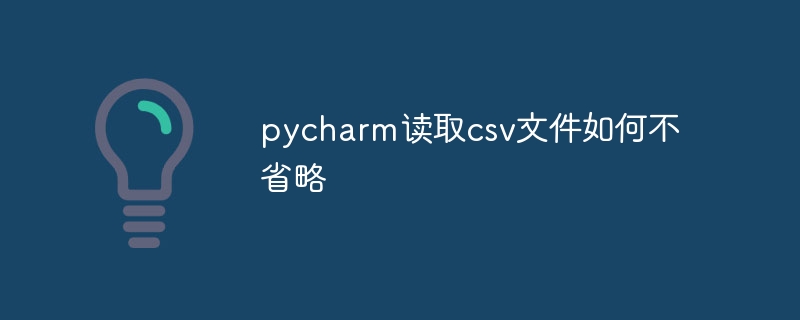Home >Backend Development >Python Tutorial >How to read csv files with pycharm without omitting them
How to read csv files with pycharm without omitting them
- 下次还敢Original
- 2024-04-18 11:57:171316browse
To use PyCharm to read a CSV file without omitting data, you can: 1. Adjust the column width; 2. Enable line wrapping; 3. Use a third-party library; 4. Export to a different format. Through these methods, ensure that all information is available.

How to use PyCharm to read CSV files without omitting data
When using PyCharm to read CSV (comma separated value) file, you may encounter the problem of data being omitted. This is because PyCharm by default shrinks longer values based on the width of the display area.
Workaround: Adjust column width
To resolve this issue, adjust the width of the column in the CSV file viewer:
- Open CSV file.
- Hover your mouse over the column header and click the down arrow that appears.
- Select "Adjust Column Width".
Other options:
In addition to adjusting column widths, there are other options to avoid data being omitted:
- Enable line wrapping: This will allow values to wrap, thus displaying longer values.
- Use third-party libraries: For example, the pandas library, which provides more flexible options for processing CSV files.
- Export to different formats: If you need to keep all the data without omitting it, you can export the CSV file to a different format, such as JSON or Excel.
Usage Example:
<code class="python">import pandas as pd
# 使用 pandas 读取 CSV 文件
df = pd.read_csv("my_data.csv")
# 禁用换行
pd.set_option('display.max_colwidth', None)
# 打印所有数据,而不省略
print(df)</code>
By following these steps, you can use PyCharm to read a CSV file without omitting data, ensuring that all information is available.
The above is the detailed content of How to read csv files with pycharm without omitting them. For more information, please follow other related articles on the PHP Chinese website!

